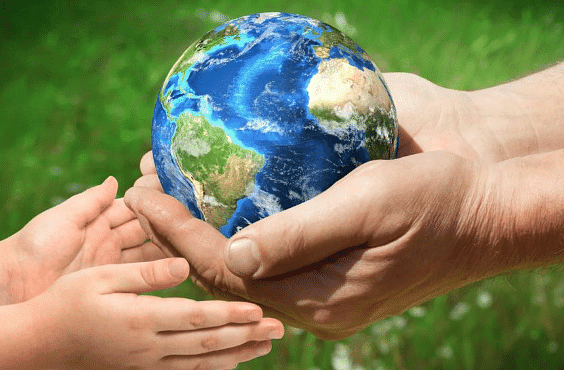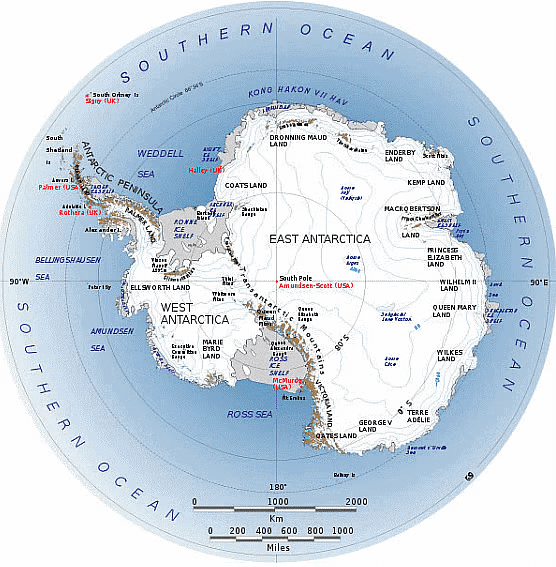The Earth-Our World - 1 Class 5 Worksheet SST
 Q1: Fill in the blanks
Q1: Fill in the blanks
(i) Man first landed on moon on _____________________.
An: Man first landed on moon on On July 19, 1969.
(ii) In the continent of _____________________ no man has permanent home.
Ans: In the continent of Antarctica no man has permanent home.
(iii) The _____________________ mountain separates Asia from Europe.
An: The Ural mountain separates Asia from Europe.
Q2: True & False
(a) The earth is a heavenly body.
Ans: True
The Earth is a celestial object in space, similar to other planets and stars.
(b) The continent of Australia is made up entirely of islands.
Ans: True
Australia is unique as it is the only continent that consists entirely of islands.
(c) All countries are parts of some continent.
Ans: False
Some countries, particularly island nations, are not part of any continent.
(d) Oceans are large bodies of water.
Ans: True
Oceans are the largest water bodies on Earth, including the Pacific and Atlantic Oceans.
Q3 : Find the Odd One Out
(i) Mountain, Plateau, Ocean, Plain
Ans: Ocean
All others are types of landforms, while an ocean is a water body
(ii)Ural Mountains, Andes, Rockies, Tropic of Cancer
Ans: Tropic of Cancer
All others are mountain ranges, while the Tropic of Cancer is a latitude line
(iii) Australia, Antarctica, Africa, Arctic Ocean
Ans: Arctic Ocean
All others are continents, while the Arctic Ocean is a body of water
Q4: Match the Following

Ans:
- A - 3 (Earth - Our home planet)
- B - 1 (Australia - Known as the island continent)
- C - 2 (Equator - Divides the Earth into hemispheres)
- D - 4 (Antarctica - Has no permanent residents)
Q5: Look at the globe and answer the following:
 (i) Which of the two hemispheres has greater land area?
(i) Which of the two hemispheres has greater land area?
Ans: Currently, the greatest amount of land mass is situated in the Northern Hemisphere. In fact, five of the Earth's seven continents are fully or partly located in the Northern Hemisphere.
(ii) Which two continents are spread over both hemispheres?
Ans: Europe and Antarctica are the two continents that are spread over both hemispheres.
(iii) Why does the level of water in all the oceans remains the same?
Ans: The level of water in all the oceans remains the same because the ocean is one continuous body of water. Its surface tends to seek the same level throughout the world. However, factors such as winds, currents, river discharges, and variations in gravity and temperature prevent the sea surface from being perfectly level.
(iv) Which continent lies only in the southern hemisphere?
Ans: The Southern Hemisphere contains most of South America, one-third of Africa, Australia, Antarctica, and some Asian islands.
(v) Which ocean surrounds the continent of Antarctica?
Ans: The Southern Ocean encircles Antarctica, and its area is usually defined as extending from the edge of the continent (and its ice shelves) to the position of the 'polar front' that separates it from the surrounding Pacific, Indian, and South Atlantic Oceans.
Q6: Answer the following questions in brief:
(i) Who sailed round the earth to prove that it is round and not flat?
Ans: Ferdinand Magellan sailed around the Earth to prove that it is round and not flat.
(ii) What is a ‘grid’?
Ans: The lines of latitude and longitude crisscross and form a network of lines on the globe and maps. This is called a grid.
(iii) Which imaginary line divides the earth into two hemispheres?
Ans: The Equator, or line of 0 degrees latitude, divides the Earth into the Northern and Southern hemispheres.
(iv) In what ways are maps different from a globe?
Ans: A globe is a three-dimensional sphere while a map is two-dimensional. The globe represents the whole earth, whereas a map may represent the whole earth or just a part of it. A globe can be used to get a broad-level picture of the world while maps provide more specific information about different places.
|
33 videos|423 docs|50 tests
|
FAQs on The Earth-Our World - 1 Class 5 Worksheet SST
| 1. What are the main layers of the Earth? |  |
| 2. How does the Earth's rotation affect day and night? |  |
| 3. What causes the seasons on Earth? |  |
| 4. What is the significance of the water cycle for the Earth? |  |
| 5. Why is it important to protect our environment? |  |
















